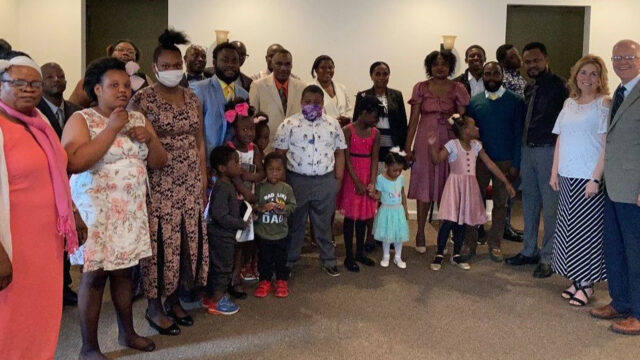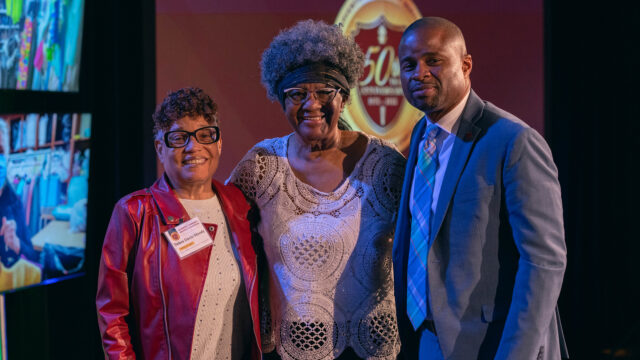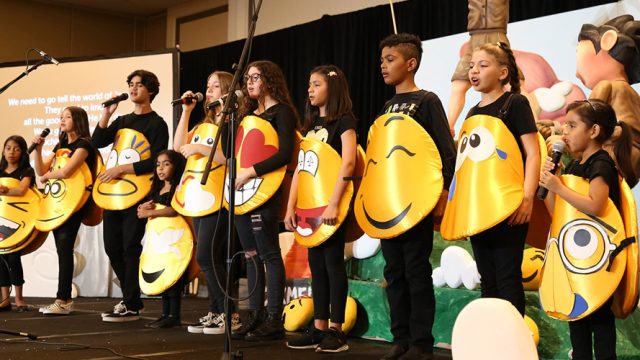Helping your children to make Jesus first starts with a simple family worship practice.

Raising children to have a strong personal faith in Jesus Christ, and equipping them to recognize and celebrate the presence of God in their lives, occur when Jesus is regularly invited into family worship in the home.
Many families, however, are so busy with work, school activities, medical appointments, and other extracurricular activities that parents are simply exhausted by the end of the day. Do they really have the time and energy to gather the family together for worship, let alone make it fun?
The Bible urges that parents are responsible to pass on their faith to their children, as reiterated from Moses’ command about God’s laws, “Impress them on your children” (Deut. 6:7, NIV) to Paul’s admonition to “bring them up in the training and instruction of the Lord” (Eph. 6:4, NIV).
V. Bailey Gillespie, a key contributor to the North American ValueGenesis study of grades 6 to 12 of Seventh-day Adventist youth, discovered the seriousness and importance of building quality family worship that is meaningful and relevant to their children.¹ The ValueGenesis study in the South Pacific Division concurred that the Christian commitment of young people increases directly as the frequency of family worship increases. This relationship is very significant.²
The Households of Faith study by Barna Research suggests that households participating in spiritual practices (defined as praying every day or two and reading the Bible weekly all together) and spiritual conversations (defined as talking about God and faith as a family at least weekly) should be considered as “spiritually vibrant.”³
Ellen White’s parenting classic, Child Guidance, strongly urges parents to hold regular family worship: “In every family there should be a fixed time for morning and evening worship. How appropriate it is for parents to gather their children about them before the fast is broken, to thank the heavenly Father for His protection during the night, and to ask Him for His help and guidance and watch care during the day! How fitting, also, when evening comes, for parents and children to gather once more before Him and thank Him for the blessings of the day that is past!”⁴.
CREATING A CONDUCIVE ENVIRONMENT
Family worship should be a fun and relaxed time to get together as a family to share and talk about the day and how God has worked in their lives. Find a time that works best for everyone’s schedule. If after breakfast in the morning or after supper in the evening works best for everyone, then pick that time. Remember, it should be short and sweet, about 10-15 minutes. A quiet place is preferable, or, if the weather permits, an undistracted outdoor setting would work well too. Parents can vary the venue, or they can let the children select their favorite spots to hold worship.
Family worships should be interesting and fun for children. Involve children in multisensory experiences using a variety of approaches. Give them opportunities to talk, share, and apply the lessons learned. Let them ask questions. They can also pray and lead the family in singing.
Ellen White offers this encouragement to parents: “Fathers and mothers, make the hour of worship intensely interesting. There is no reason why this hour should not be the most pleasant and enjoyable of the day. A little thought given to preparation for it will enable you to make it full of interest and profit. From time to time let the service be varied. Questions may be asked on the portion of Scripture read, and a few earnest, timely remarks may be made. A song of praise may be sung. The prayer offered should be short and pointed.”⁵
EASY AND FUN IDEAS FOR FAMILY WORSHIP
Many fun and engaging family worship ideas don’t require much preparation or much time. The ages of the children also determine what should be used. Here are some suggestions.
OBJECT LESSONS
Use common objects that children are familiar with, such as rocks, plants, seashells, ropes, or whatever unique props you may have available to teach Bible lessons. Try several of these:
Smashed Tomatoes—Put one or two ripe tomatoes into a strong plastic bag. Ask your child to step on it or smash it with their hands. Then ask: “Can we still use these smashed-up tomatoes? Should we throw them away? Let children suggest some answers—making a tomato sauce for spaghetti? salsa (or sauce) to go with tortilla chips?
What can you learn from this activity? Like the smashed tomatoes, we are smashed up, messed up, making mistakes time and again, but God still loves us and forgives us. Let’s read Jeremiah 1:5, Isaiah 1:18, and John 3:16.
DRAMA, PANTOMIMES, AND CHARADES
Younger children can enact Bible stories.
Older children can do Bible charades for family members to guess. Then discuss the character traits that can apply to everyone in the family.
STORIES
A child or a parent can read an interesting Bible story and discuss it.
An older child can tell a Bible story and then ask questions. Everyone can share how they would apply the lesson from the Bible story. Example: How can you be brave like David today in your school?
USE SCRIPTURE
Read a psalm together and ask each family member to pray over the verse that is most meaningful to them.
Each one finds one Bible promise and tells why he or she likes it.
MAKING MUSIC
Each family member selects a favorite song to sing together and then explains why that particular song was chosen.
Introduce the story of a favorite hymn and pray about how we can live out that message.
Does it seem too complicated? Don’t lose heart, busy parents. The gospel is powerful and saves. Just use a little creativity and time and apply them consistently as you set up your family altar daily before the Lord. You’ll be helping your children say “Yes!” to Jesus!
*True happiness: use a piece of paper to tell the gospel story—the story of a man who had everything on earth, a jet, a house, money, etc., but was not happy. He found out later that only Jesus can make him happy. Use the paper to tear it into a cross. Visit: https://www.youtube.com/watch?v=0axfBeDnsyg.
¹ V. Bailey Gillespie, General Conference Studies Suggested Church Can Develop Faith in Its Young People, ANN, May 3, 2010, online at https://adventist.news/news/studies-suggest-ways-church-can-develop-faith-in-its-young-people.
² South Pacific Division of Seventh-day Adventists, Valuegenesis Study 1, Core Report (1993), pp. 44, 45, http://circle.adventist.org/files/download/VGCORERE.pdf.
³ Barna Group, “Opportunities for Faith Formation at Home,” Family and Kids, Apr. 21, 2020, https://www.barna.com/faith-formation-at-home/.
⁴ Ellen G. White, Child Guidance (Nashville: Southern Pub. Assn., 1954), p. 520.
⁵ Ellen G. White, Testimonies for the Church (Mountain View, Calif.: Pacific Press Pub. Assn., 1948), vol. 7, p. 43.








